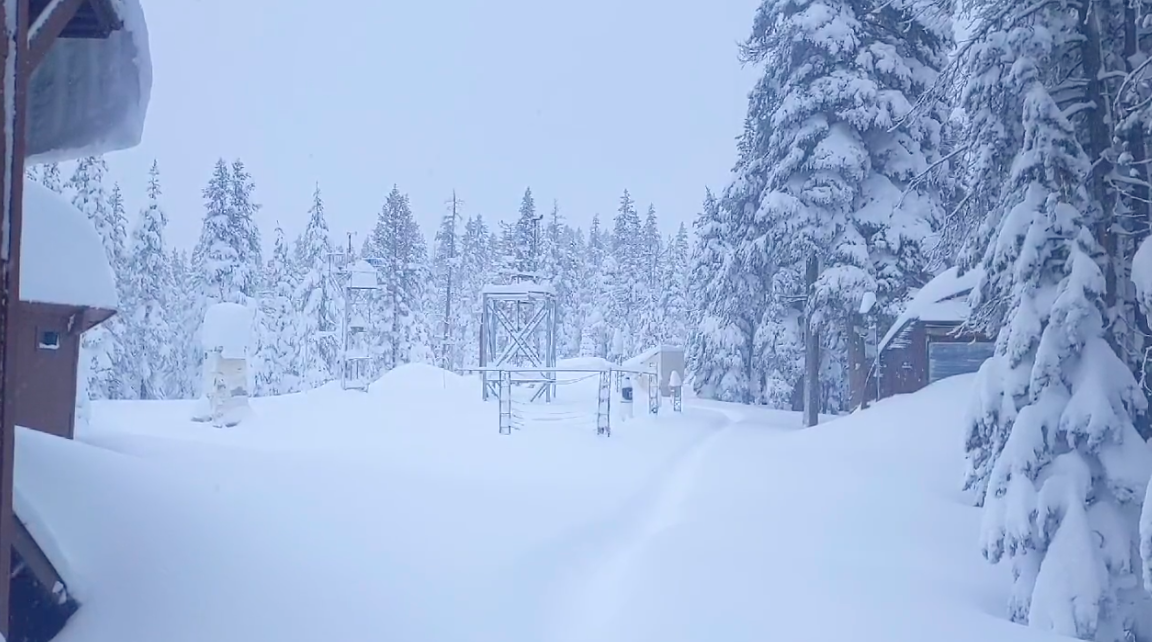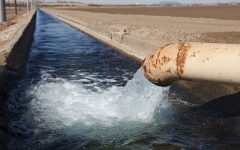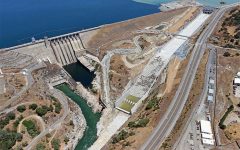
UC Berkeley Central Sierra Snow Lab. (Photo: cssl.berkeley.edu)
California Snowpack at 174% of Average, is Highest In Forty Years
State officials still offer drought warnings this year
By Evan Symon, January 5, 2023 2:30 am
The first California Department of Water Resources (DWR) snow survey of 2023 conducted this week found that the statewide snowpack is currently at 174% the average, one of the highest early total since the 1980s.
While many experts are cautiously optimistic at the current snowpack total, a figure that is expected to rise even higher following a new bomb cyclone expected to give many more inches of rain and snow throughout the rest of the week, they also warned that the April 1st figure is much better to know before talks of ‘drought aversion’ can begin. Since April 1st is the date snowpack is expected to be the greatest heading into the spring and summer, a high early January snowpack figure is seen as a good start, but one that is not guaranteed to relieve the drought. An example is last year where, at the same time, snowpack levels were at 160%, but by April 1st they had shrunk down to 38%. Also comparable is 2016, when at this time snowpack was only at 67%, while on April 1st it was at 163%.
DWR officials repeated the retrained optimism on Tuesday and Wednesday following following snow measurements at 261 locations across the state.
“While we see a terrific snowpack — and that in and of itself may be an opportunity to breathe a sigh of relief — we are by no means out of the woods when it comes to drought,” noted DWR Director Karla Nemeth.
DWR drought manager Jeanine Jones added that “We know that it’ll take quite a bit of time and water to recover this amount of storage, which is why we don’t say that the drought is over once it starts raining.”
Most poignantly, DWR Snow Surveys Manager Sean De Guzman explained, “active weather in recent weeks has led to one of the best starts to the wet season in the last 40 years, but that a lot can change with several months to go. We’re cautiously optimistic at this point. But we all know what could happen if the pattern turns dry. Rain on snow can have both positive and negative impacts, but at this point, we’ll take whatever precipitation we can get. We need it to fill up our reservoirs.”
In the past several years, large reservoirs such as Lake Shasta and Lake Oroville have nearly bottomed out due to the drought. Thanks to recent rain and colder temperatures, Lake Shasta is currently at 34% capacity with Lake Oroville at 38%. These are only small increases from previous lows below 30%, but are steadily rising due to recent rainfall. Experts hope that, along with some more precipitation later into the winter and into early spring, California may finally be in drought turnaround following several years of water restrictions and dwindling water allotments for urban and agricultural use.
“We’re getting a big hand from mother nature right now,” Jack Wesley, a water systems consultant for farms and multi-family homes, told the Globe on Wednesday. “And it looks like we’ll be getting more in the coming week or so. If we get some more big rain events in February and March, California will be in good shape heading into the hotter months. But we can’t get our eyes off the ball right now and just continue monitoring the situation. Best case scenario though, farmers will have the water they need and people will no longer have big restrictions on them. But we’ll need everything to go right. And, well, we couldn’t have asked for a better star precipitation-wise this year.”
New snow level checks by the DWR are expected in the coming weeks.








Wow! More proof of global warming! Or is it climate change? I just can’t keep up with the weekly terms of the climate alarmists!
Even with more precipitation later into the winter and into early spring, Democrats will not allow a drought turnaround? No doubt Gov. Newsom and Democrats will release most of the water and let it flow out to the ocean leaving the water restrictions and dwindling water allotments for urban and agricultural use in place? Democrats want California in a perpetual state of drought because it increases their power over Californians?
If Democrat/communists wanted to solve our boom bust water problem we would be adding dams (with bonus hydroelectric) instead of taking them out, Iron Gate (worlds largest dam removal in history) case in point. But then we wouldn’t have constant crisis now would we
Agree.
Edward Ring has a great series on how to solve our water crisis in California. The epoch times condensed his series into a full page and it is fantastic. Newsom et. al could fix this today!
They have an opportunity to bring relief to farmers, individuals and businesses. Will they? Do they truly give a damn?
https://www.theepochtimes.com/creating-water-abundance-in-california_4900979.html
Good news! Right now the snow pack report shows 179% of average for this date!!